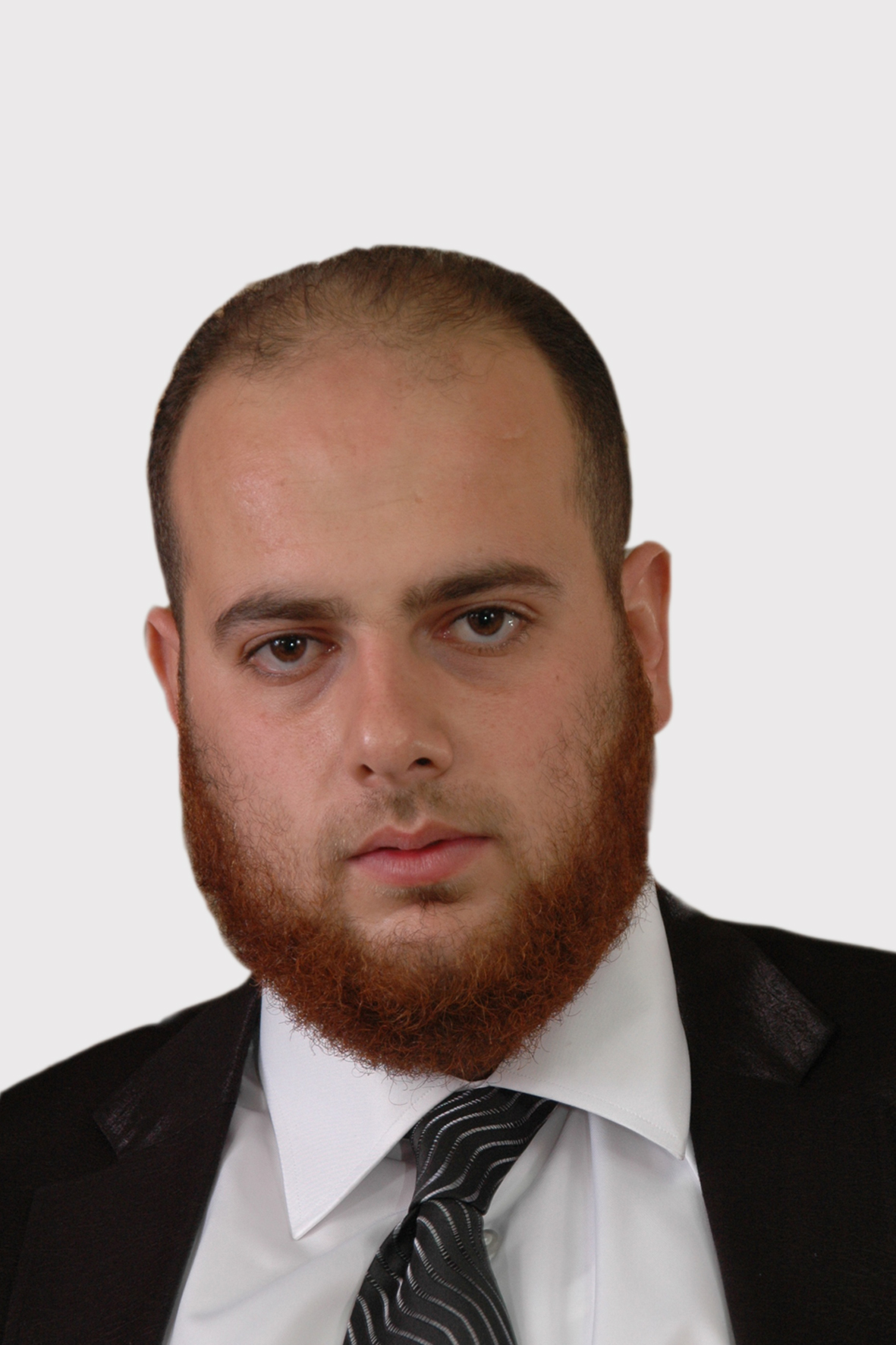
Title: k-means clustering algorithm for mixed data
Speaker
Loai Abdullah
Max Stern Yezreel Valley College,Israel
Abstract
Clustering, is an artificial intelligence technique that partitions objects into sub-groups. In clustering the goal is to group similar objects together and different objects into different groups.
K-means is one of the well-known clustering algorithms and most popular. It works by assigning each point( i.e. object) to the closest center and then update the centers based on those points. However, clustering data with mixed types (i.e. attributed with numerical and categorical types) is still a challenging open problem. In this study, we proposed a new k-means clustering algorithms for mixed datasets.
Research method:
Running K-means clustering algorithm requires a distance function in order to associate each point to the closest center, and mean formula in order to update the centers.
Let assign the attributes, and let contains the numerical and categorical attributes, respectively. Then, the distance between two points will be:
Where,
Using this distance, we built a distance matrix that include all the distances between the points. Then we use the multi-dimensional-scaling technique in order to represent the objects in a continues form.
As a result, the new space will include only continues attributes that reflects the actual similarity between the objects as in the original form. Then we run the original k-means clustering algorithm on the new space dataset.
Biography
Loai received his B.Sc. - Ph.D in Mathematics in 2014 in Artificial Intelligence from the University of Haifa. Currently he is a member in the department of Information Systems at The Max Stern Yezreel Valley College. Loai is a researcher and algorithm developer in the fields of artificial and business intelligence, computer vision, and big data from 2005. He founded xBiDa, a company that deals with artificial intelligence for big data and computer vision in 2017.
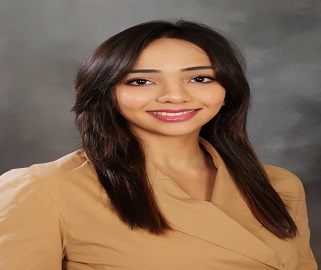
Title: AI in Fashion and Entertainment
Speaker
Hiral Raval
Columbia University, USA
Abstract
Biography
Hiral Raval pursued MS in Applied Analytics and Data Science from Columbia University in the City of New York. She specializes in leveraging data science across various organizational contexts and impactful storytelling with data. While at Columbia, she spearheaded an NLP backed ESG project for Accern that was aimed to aid financial institutions in making investment decisions. She subsequently joined Accern as a Customer Success Manager to continue her work in the ESG vertical and to expand the knowledge graph of financial events and entities. She currently works as a business performance specialist at Amazon’s Global Media and Entertainment company – Audible. She brought into play various data science and analytics frameworks and methods for examining the business performance for the C-suite executives. She further steers the strategy building for verticals as such marketing, product, content and business at large. She vests deep interest in exploring ways AI can ensure sustainable fashion. She is also an ambassador at One Young World championing gender equality, and sustainability in cities and communities.

Title: Early Alzheimer Disease detection through machine learning applied to neuroimaging data
Keynote
David Perpetuini
D'Annunzio University of Chieti - Pescara, Italy
Abstract
Biography
David Perpetuini graduated in Biomedical Engineering from the Marche Polytechnic University of Ancona in 2012. In 2018, he obtained the title of Ph.D. in Neuroscience and Neuroimaging at the University "G. d'Annunzio" of Chieti-Pescara with a final dissertation entitled:" Complexity analysis of fNIRS signal: validation and clinical applications ". Part of the Ph.D.'s research work was carried out at the Department of Biomedical Engineering and Medical Physics of the University College of London (UCL) and at the Institute of Cognitive Neuroscience (ICN) in London. Since 2018 he has been a post-doctoral researcher at the Department of Neuroscience, Imaging and Clinical Sciences of the University "G. d’Annunzio " of Chieti-Pescara. His research work mainly concerns the study of brain activity through functional near-infrared spectroscopy (fNIRS), particularly in Alzheimer's disease patients, employing machine learning and artificial intelligence techniques. Moreover, he develops algorithms for the detection of the autonomic nervous system activity by means of functional thermal imaging and he investigates the state of vascular aging using photoplethysmography.

Title: ARTIFICIAL INTELLIGENCE as enabling technology for Complex Projects Delivery
Keynote
Dr Robert plana
ASSYSTEM, France
Abstract
In the context of climate change, we see a significant move concerning the Energy that will have to be clean, sustainable and affordable. This turns out to a radical change in the infrastructures that will have be developped with better performances, lower costs and higher resilience. This will translate inyto projects featuring much larger complexity. This complexity is reflected through the numbers of stakeholders, the number of requirements, number of interfaces and the multidisciplinary character. This results to a large diversity of data, fully unstructured that will have to be kept actionable for very long cycle (around 100 years).
Complex Systems modelling techniques coupled to datascience ones will be key to structure the data and to create digital twin at system level that will facilitate the delivery of the large Energy Infrastructure Projects. NLP/OCR techniques coupled with ML/DL algorithms will enable the acceleration of the engineering processes. Robotic Process Automation will replace a large number of manual tasks and finally Optimization under constraints techniques will propose innovative delivery path for the projects minimizing the overrun and overcost.
The paper will overview the different technologies existing and under development through the angle of the delivery of Nuclear Power Plant.
Biography
Robert Plana has been Professor at Paul Sabatier University in Toulouse and at the Institut Universitaire de France in the field of Internet of Things Technologies. He has occupied numerous top management positions at CNRS, National Research Agency and Ministry of higher education and research. In the private sector, he has been working with a startup (SiGe Microsystems) as Senior Technology Leader, with Alstom as Open Innovation Director and with GE as the CTO and Ecosystem Director of the GE Digital Services for Europe. He is now the Chief Technology Officer of ASSYSTEM Group in charge of the Innovation strategy and leading the program “Engineering Powered by digital services”. He is pioneering the convergence between Big Data, Artificial Intelligence and Advanced System Engineering for mission critical Infrastructures.

Title: Thermal infrared imaging applications in human-machine interaction
Keynote
Ms. Daniela Cardone
D'Annunzio University of Chieti - Pescara, Italy
Abstract
Human-machine interaction (HMI) is a spreading research field, which studies the interaction and communication between human users and machines. It is strictly related to the area of Ergonomics, which generally studies the human factors influencing the interaction of humans with living/working scenarios [1].
In HMI, it is of foundamental importance to establish the psychophysiological state of the human agent to favor the interaction with the machine, whether it be a robot or a vehicle [2]. Typically, psychophysiological states are assessed through behavioral analysis and/or the measurements of autonomic nervous system (ANS)-related parameters, i.e. modulations of heart beat and/or breathing rate, galvanic skin response, hand palm temperature, and peripheral vascular tone.
Classical approaches developed to monitor these variables require the use of contact sensors or devices, thus resulting invasive for the subject and, overall, biasing the estimation of the psychophysiological state, since the complete participation of the individual is required.
To overcome the limitations of contact sensors, computational psychophysiology based on thermal infrared (IR) imaging has been assessed as a solution for the quantitative evaluation of several parameters associated with ANS activity [3]. In fact, IR imaging is a non contact measurement method which estimates autonomic parameter, such as the breathing rate, the cardiac pulse, the cutaneous blood perfusion rate, the sudomotor response, and, in generalallows to assess the psychophysiological responses to an external stimulation (i.e. the stress response [4], the cognitive workload [5]).
The possibility to access these human factors through a non-contact technology makes thermal IR imaging perfectly suitable in the HMI field. In particular, it has been successfully used in the automotive research area, to assess the psychophysiological state of the driver and a relevant number of scientific works are available. Most of these publications concern driver drowsiness/fatigue monitoring and emotional state detection [6-8]. Recently, some machine learning-based models have been developed to classify the stress [9], the drowsiness [10] and the cognitive workload [11] of the driver relying on thermal features of facial regions of interest ROIs), in particular relative to the nosetip and corrugator ROIs.
Another important field of application has been the robotics research area, with a deep focus on social robots and rehabilitative robots. In the first kind of application, the main aim is using thermal IR imaging to understand the human’s need and his/her affective state during the interaction with the artificial agent and regulate consequentially the behavior of the social robot, as to reproduce a human-like interaction [12]. In the context of rehabilitation robots, instead, the objective is to monitor the emotional and motivational state of the subjects as to enhance the rehabilitative outcomes in patients with motor impairment [13].
Future studies still need to be performed to strengthen and improve the interaction between the human and the artificial agent, but the perspective is strongly promising, given also the possibility to rely on miniaturized thermal cameras, which can be easily embedded into the interacting machine system.
Biography
Daniela Cardone obtained a Master's Degree in Biomedical Engineering at the La Sapienza University of Rome in 2009. In 2013, she obtained the title of Ph.D. in Neuroscience and Neuroimaging at the University "G. d’Annunzio "of Chieti-Pescara. Since June 2021, she has the role of Research Fellow, Senior Research at the Department of Engineering and Geology of the University of "G. d’Annunzio "of Chieti-Pescara. Her research work mainly concerns the development of processing methods and analysis of images and physiological signals, of various nature. Her main activity concerns, in particular, thermal infrared (IR) imaging. In this context, she developed real-time tracking algorithms for specific areas of interest and IR image morphing methods on anatomical templates. She also dealt with the realization of image fusion algorithms between visible and thermal images. More recently, her research has focused on affective computing and human-machine interaction, with particular reference to the automotive research field and assistive robotics.

Title: Numerical infinities and infinitesimals in optimization and not only
Plenary
Yaroslav D. Sergeyev
University of Calabria, Rende, Italy
Abstract
In this talk, a recent computational methodology is described. It has been introduced with the intention to allow one to work with infinities and infinitesimals numerically in a unique computational framework. It is based on the principle ‘The part is less than the whole’ applied to all quantities (finite, infinite, and infinitesimal) and to all sets and processes (finite and infinite). The methodology uses as a computational device the Infinity Computer (a new kind of supercomputer patented in USA and EU) working numerically with infinite and infinitesimal numbers that can be written in a positional system with an infinite radix. On a number of examples (numerical differentiation, divergent series, ordinary differential equations, fractals, set theory, etc.) it is shown that the new approach can be useful from both theoretical and computational points of view. The main attention is dedicated to applications in optimization (local, global, and multi-objective) - the field thast is actively used in machine learning. The accuracy of the obtained results is continuously compared with results obtained by traditional tools used to work with mathematical objects involving infinity. The Infinity Calculator working with infinities and infinitesimals numerically is shown during the lecture. For more information see the dedicated web page https://www.theinfinitycomputer.com and this survey: Sergeyev Ya.D. Numerical infinities and infinitesimals: Methodology, applications, and repercussions on two Hilbert problems, EMS Surveys in Mathematical Sciences, 2017, 4(2), 219–320.
Biography
Yaroslav D. Sergeyev is Distinguished Professor at the University of Calabria, Italy (professorship awarded by the Italian Government) and Head of Numerical Calculus Laboratory at the same university. He is also Member of the University International Council and Professor (part-time contract) at Lobachevsky Nizhniy Novgorod State University, Russia, Affiliated Researcher at the Institute of High Performance Computing and Networking of the Italian National Research Council, and Affiliated Faculty at the Center for Applied Optimization, University of Florida, Gainesville, USA. He was awarded his Ph.D. (1990) from Lobachevski Gorky State University and his D.Sc. degree (1996) from Lomonosov State University, Moscow (this degree is Habilitation for the Full Professorship in Russian universities). In 2013, he was awarded Degree of Honorary Doctor from Glushkov Institute of Cybernetics of The National Academy of Sciences of Ukraine, Kiev. His research interests include numerical analysis, global optimization (he was President of the International Society of Global Optimization, 2017-2021), infinity computing and calculus (the field that he has founded), philosophy of computations, set theory, number theory, fractals, parallel computing, and interval analysis. Prof. Sergeyev is included in the lists “Top Italian Mathematicians” and “Top Italian Computer Scientists”. He was awarded several research prizes (Khwarizmi International Award, 2017; Pythagoras International Prize in Mathematics, 2010; EUROPT Fellow, 2016; Outstanding Achievement Award from the 2015 World Congress in Computer Science, Computer Engineering, and Applied Computing, USA; Honorary Fellowship, the highest distinction of the European Society of Computational Methods in Sciences, Engineering and Technology, 2015; The 2014 Journal of Global Optimization (Springer) Best Paper Award; Lagrange Lecture, Turin University, Italy, 2010; MAIK Prize for the best scientific monograph published in Russian, Moscow, 2008, etc.). In 2020, he was elected corresponding member of Accademia Peloritana dei Pericolanti in Messina, Italy. In 2020 and 2021, he was included in the rating “Highly cited authors in Scopus”. His list of publications contains more than 250 items (among them 6 books). He is a member of editorial boards of 12 international and 3 national journals and co-editor of 11 special issues. He delivered more than 70 plenary and keynote lectures at prestigious international congresses. He was (Co-)Chairman of 11 international conferences and a member of Scientific Committees of more than 60 international congresses. He is Coordinator of numerous national and international research and educational projects. Software developed under his supervision is used in more than 40 countries of the world. Numerous magazines, newspapers, TV and radio channels have dedicated a lot of space to his research.
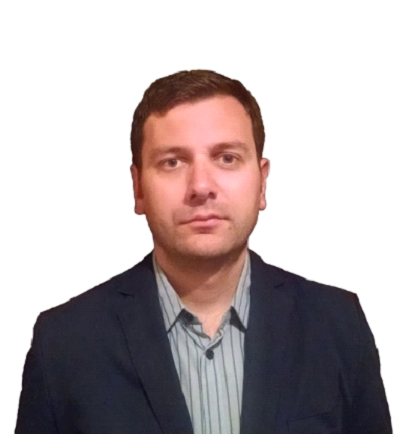
Title: Automated Corneal Edema Detection with Second Harmonic Generation Microscopy and Deep Learning
Speaker
Stefan Stanciu
University Politehnica of Bucharest, Romania
Abstract
When the cornea becomes hydrated above its physiologic level it begins to significantly scatter light, loosing transparency and thus impairing eyesight. This condition, known as corneal edema, can be associated with different causes, such as corneal scarring, corneal infection, corneal inflammation, corneal dystrophies, and others, making it difficult to diagnose and quantify. Previous works have shown that Second Harmonic Generation Microscopy (SHG) represents a valuable non-linear optical imaging tool to non-invasively identify and monitor changes in the collagen architecture of the cornea, potentially playing a pivotal role in future in-vivo cornea diagnostic methods. In this work we explore the use of three Deep Learning models, the highly popular InceptionV3 and ResNet50, alongside FLIMBA, a custom developed architecture, requiring no pre-training, to automatically detect corneal edema in SHG images of porcine cornea. We discuss and evaluate data augmentation strategies tuned to the specifics of the herein addressed application and observe that Deep Learning models building on different architectures provide complementary results for the classification of cornea SHG images. Importantly, we observe that the combined use of such complementary models boosts the overall classification performance in the case of differentiating edematous and healthy corneal tissues, up to an AU-ROC=0.98. These results have potential to be extrapolated to other diagnostics scenarios, such as automated extraction of hydration level of cornea, or automated identification of corneal edema causes, and thus pave the way for novel methods for cornea diagnostics with Deep-Learning assisted non-linear optical imaging.
Biography
Stefan G. Stanciu received the Ph.D. degree in electronics and telecommunications from University Politehnica of Bucharest (UPB), Bucharest, Romania, in 2011. He was a Postdoctoral Researcher with UPB and ETH Zurich, Zürich, Switzerland. He is currently a Principal Investigator with Center for Microscopy-Microanalysis and Information Processing, UPB, and is habilitated in Physics. He has co-authored >70 Web of Science journal articles, with >30% as main author, and several book chapters. His research focuses on high- and super-resolution imaging by scanning laser and scanning probe microscopies. Stefan currently coordinates various research projects that focus on super-resolved imaging of cells, tissues, and advanced materials, and on the development of related image analysis and processing methods, with focus also on artificial intelligence.

Title: Machine learning approach to mean reversion trading
Keynote
Tim Leung
University of Washington,USA
Abstract
Biography
Tim Leung is the Boeing Endowed Chair Professor of Applied Mathematics and Director of the Computational Finance & Risk Management (CFRM) program at the University of Washington in Seattle. He is the founder and director of the CFRM Quantitative Analytics Lab. Previously, he was a tenure-track Assistant Professor in the Department of Applied Mathematics & Statistics at Johns Hopkins University and in the Department of Industrial Engineering & Operations Research at Columbia University. He obtained his BS from Cornell University and Ph.D. from Princeton University. His research areas are Quantitative Finance and Stochastic Optimal Control. He has worked on a variety of problems, such as derivatives pricing, algorithmic trading, exchange-traded funds (ETFs), commodities and cryptocurrencies. His research has been funded by the National Science Foundation (NSF). He has published over 60 peer-reviewed articles and several books on the topics of Mean Reversion Trading, ETFs, Futures Trading, and Employee Stock Options. In 2016, he won the Emerald Literati Network Award.

Title: Responsible AI
Speaker
Olawuyi Bilikis Abimbola
Summit University Offa, Nigeria
Abstract
Biography
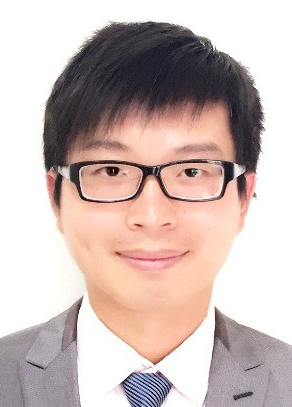
Title: Data Mining and Analytics: A Comprehensive Study of High Utility-Driven Models
Plenary
Prof. Jerry Chun-Wei Lin
Western Norway University, Norway
Abstract
As a large amount of data is collected daily from individuals, businesses, and other organizations or applications, various algorithms have been developed to identify interesting and useful patterns in data that meet a set of requirements specified by a user. The main purpose of data analysis and data mining is to find new, potentially useful patterns that can be used in real-world applications. For example, analyzing customer transactions in a retail store can reveal interesting patterns about customer buying behavior that can then be used for decision making. In recent years, the demand for utility-oriented pattern mining and analytics has increased because it can discover more useful and interesting information than basic binary-based pattern mining approaches, which has been used in many domains and applications, e.g., cross-marketing, e-commerce, finance, medical and biomedical applications. In this talk, I will first highlight the benefits by using the utility-oriented pattern mining and analytics compared to the past studies (e.g., association rule/frequent itemset mining). I will then provide a general overview of the state of the art in utility-oriented pattern mining and analytic models according to three main categories (i.e., data level, constraint level, and application level). Several techniques and modeling on different aspects (levels) of utility-oriented pattern mining will be presented and reviewed.
Biography
Jerry Chun-Wei Lin currently serves as a full professor in the Department of Computer Science, Electrical Engineering and Mathematical Sciences at Western Norway University of Applied Sciences in Bergen, Norway. He has published more than 500 research papers in peer-reviewed journals (more than 70 ACM/IEEE journals) and international conferences. His research interests include data mining, soft computing, deep learning/machine learning, security and privacy, optimization, fintech, and IoT applications. He is Editor-in-Chief of the Data Science and Pattern Recognition (DSPR) journal, Associate Editor for 11 SCI journals including IEEE Transactions on Neural Networks and Learning Systems (IEEE TNNLS), IEEE Transactions on Cybernetics (IEEE TCYB), Information Sciences (INS) and others. He has served as a guest editor for more than 60 SCI journals, including some top-tier journals in ACM and IEEE, e.g., ACM TOIT, ACM TALLIP, ACM TMIS, ACM JDIQ, IEEE JBHI, IEEE TII, IEEE TFS and IEEE TITS. He is the co-leader of the well-known SPMF project, which provides more than 200 data mining algorithms and has been cited in many different applications (about 1000 citations). He was also recognized as the most cited Chinese researcher by Elsevier/Scopus in 2018, 2019, 2020, and 2021, and as a top-2% scientist in 2020 and 2021 by the report of the Stanford University. He was also recognized as one of the top-10 most productive researchers in Norway in 2021. He is a Fellow of IET (FIET), ACM Distinguished Scientist, and IEEE Senior Member.

Title: Hyper-Performance with Human Artificial Intelligence
Keynote
Prof. Agnis Stibe
EM Normandie Business School, France
Abstract
While artificial intelligence can make fundamental transformations, people are still at the core of achieving profound organizational hyper-performance. Why? Because, human factors, such as decision-making and behavioral choices, continuously influence and determine the level of success and results for most organizations. Therefore, artificial intelligence should be well prepared to manage the peculiarities of human psychology and neurology. Artificial intelligence is already helping organizations to manage increasing loads of exponentially growing data volumes, thus enabling rapid behavioral pattern recognition. That helps to narrow down and locate groups of people with distinct behavioral deviations, which highlights the possibility of having a common attitudinal barrier behind their underperformance. This keynote is an engaging deep dive into the science and practice of designing transformative solutions that efficiently blend technological advancements with human nature. It provides many insightful videos that uncover who we really are and convincingly portrays a prosperous future with united human artificial intelligence.
Biography
4x TEDx speaker, MIT alum, YouTube creator. Globally recognized corporate consultant and scientific advisor at AgnisStibe.com. Offers an authentic science-driven STIBE method and practical tools for hyper-performance. Artificial Intelligence Program Director and Professor of Transformation at EM Normandie Business School. Paris Lead of Silicon Valley founded Transformative Technology community. At the renowned Massachusetts Institute of Technology, he established research on persuasive cities for sustainable wellbeing. His change method is helping millions to gain confidence and build resilience against everyday circumstances. It will help you achieving stressless hyper-performance at work and certainty in life. Within this vision, business acceleration and societal wellbeing can be achieved through purposefully designed innovations that successfully blend technological advancements with human nature.

Title: Artificial Intelligence in Healthcare and Medical Devices -The Regulations in Samed and Ai
Speaker
Vidya Sagar
The University of Texas at Austin,USA
Abstract
Biography

Title: Moving Human Detection and Tracking in Thermal Video through Intelligent Surveillance System for Smart Applications
Speaker
Dileep Kumar Yadav
Galgotias University,India
Abstract
Biography
Dr. Dileep Kumar Yadav received the Engineering degree (B. TECH. in Computer Science & Engineering) from Uttar Pradesh Technical University, Lucknow, UP, India in 2006 and masters degree (M.TECH. in Computer Science & Technology) from School of Computer & Systems Sciences, Jawaharlal Nehru University, New Delhi, India in 2011. Dr. Yadav has earned Ph.D. (Computer Science & Technology) degree from School of Computer & Systems Sciences, Jawaharlal Nehru University New Delhi, India in 2016. He is Sun Certified Java Programmer. He is author of 65 research publications (Patent, Journals, and National/International conferences). He has also written books and many book chapters for internationally reputed publishers. His primary research interests are in image processing, computer vision, Artificial Intelligence and Machine Learning over dynamic data specially in adverse situation. Dr. Yadav is also associated with many international journals as Associate Editor, Member, Int. Editorial Board member etc. He has more than 12 years of working experience in industry as well as academia. Dr. Yadav is recipient of various awards from national and International organizations in research. He is also supervising many national and international students for pursuing their research work. Currently, Dr. Yadav is working an Professor in Dept. of CSE, SCSE, Galgotias University, Greater Noida, India.

Title: Arti Jain
Speaker
Arti Jain
Utility of Machine Learning and Data Science: Case Study
Abstract
Biography
DR. ARTI JAIN is working as an Assistant Professor (Sr. Grade) in the Department of Computer Science & Engineering at Jaypee Institute of Information Technology (JIIT), Noida, Uttar Pradesh, India. She has academic experience of 20+ years. She has her undergraduate in Mathematics (1998) from Delhi University; MCA (2002) from Panjab University; M.S. (2009) from BITS Pilani; and Ph.D. in Computer Science & Engineering (2019) from JIIT Noida. She is a Sr. member of IEEE, and also a member of INSTICC, IAENG, SAFAS, IFERP, and TERA. She is an Editorial Board member of the Journal of Technological Advancements (JTA), IGI Global; American Journal of Neural Networks and Applications (AJNNA), SciencePG; International Journal of Innovations in Engineering & Technology (IJIET); International Journal of Information Technology and Web Engineering (IJITWE), IGI Global. She is an International Advisory Committee member of the International Conference on Applied Engineering and Natural Sciences (ICAENS-2022), Konya, Turkey; the International Conference on Recent Trends in Multi-Disciplinary Research (ICRTMDR-22), Qatar; International Conference on Software Development and Technologies for Enhancing Accessibility and Fighting Info-Exclusion (DSAI 2022), Lisboa, Portugal; International Conference on Recent Trends in Multi-Disciplinary Research (ICRTMDR-2021), Maldives; International Conference on Applied Sciences, Engineering, Technology and Management (ICASETM-2020), Dubai, UAE. She is also an advisory member of the ATAL advisory committee, Atal Tinkering Lab, Jaypee Public School (JPS), Noida. She is a reviewer of reputed and peer-reviewed International Journals- World Scientific, Taylor & Francis, Springer, IGI Global, John Wiley & Sons, Tech Science Press, Inderscience, GRD, and Premier. She has guest-edited contemporary Special Issues in International Journals. She is a Program Committee member of several International Conferences and has also conducted Special Sessions. She has Chaired Sessions at International Conferences- ICRASES 2022; KDIR 2021, AIMV 2021, FTSE 2021; ICICC 2020. She is an invited speaker for various workshops, seminars, and conferences such as International Conference on Big Data, Data Mining, and AI, United Research Forum (UK, 2022); Workshop on Computer Methods in Medicine & Health Care, Transdisciplinary Information Sciences Conferences (China, 2021); 2nd International Webinar on Big Data Analytics and Data Science, Coalesce Research Group (USA, 2021); National Workshop on Soft Computing and Language Processing. She has also been the key resource person for prestigious FDPs such as Deep Learning for Natural Language Processing, Applications of Machine Learning, and International Knowledge Development Program by Special Minds, to name a selected few. She has participated in more than 85 specialized short-term courses. She has published 2 books to her credit. She has more than 30 research papers in peer-reviewed International Journals, Book Chapters, and International Conferences. She has supervised M.Tech. Thesis in the area of Social Media Analytics, and around 50 B.Tech. Projects. Currently, she is supervising 2 Ph.D. candidates. Her research interest includes Natural Language Processing, Machine Learning, Data Science, Deep Learning, Social Media Analysis, Soft Computing, Big Data, and Data Mining.
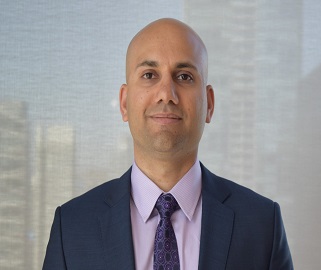
Title: Key Capabilities Required to Successfully Institutionalize an AI/Hyper Automation Program, and Capture Material Value.
Keynote
Raj Kanwar
Business Model Innovation Leveraging Emerging Technologies,USA
Abstract
Biography
Rajan Kanwar is a seasoned intrapreneur with 12+ years of cross-industry thought leadership and consulting experience in deconstructing archaic business models, and agile engineering, rapidly testing and strategically deploying disruptive business and operating models harnessing emerging AI, ML and Robotic technologies, frictionless processes, and risk and change management. His industry leadership experience in spearheading enterprise-wide multi-year digital transformation initiatives across diverse verticals, including, Banking, Retail, and Transportation & Logistics, has honed his execution and value realization capabilities. His leadership roles with consulting firms has enabled him to be the trusted techno-functional advisor, solution architect, and program delivery leader facilitating Fortune 500 organizations transform their business models to create untapped value and successfully ride Industrial Revolution 4.0 wave.
“ Will be updated soon...”
+91 9491 456 452
Door No.200, Immidhihalli Main Road, Whitefield-560066, Bangalore, India
About Us
Global Scientific Guild organizes conferences and webinars to promote quality research and real world impact in an atmosphere of true international co-operation between scientists, doctors, professors, practitioners, engineers and industry by bringing together the world class renowned personalities to discuss the latest developments and innovations at one common platform.